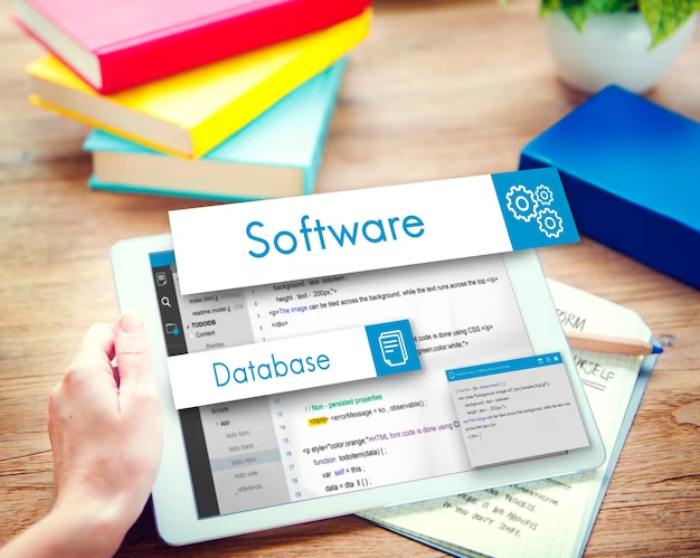What is Softwares? – Four Categories of Software : In the ever-evolving landscape of technology, software plays a pivotal role, serving as the driving force behind the functionality and usability of modern computing systems. Software encompasses various programs, applications, and instructions that enable computers and electronic devices to perform specific tasks, facilitate communication, and enhance user experiences. Understanding the diverse categories of software is essential for both users and developers, as it forms the foundation upon which our digital world operates.
In this comprehensive exploration, we will delve into the intricacies of software, dissecting its definition and significance in contemporary computing. By categorizing software into distinct groups, we can grasp the varied purposes and applications that software serves. From system software that powers the core functions of computers to application software designed for specific tasks and user interactions, and from programming software essential for developers to embedded softwares deeply integrated into devices, each category has its unique role and impact.
Categories of Softwares

Indeed, let’s delve deeper into the four primary categories of software:
I. System Software:
System software serves as the backbone of a computer, managing hardware components and providing a platform for software applications to run. It is an intermediary between the hardware and user applications, ensuring seamless communication and coordination. Examples of system software include:
- Operating Systems: Windows, macOS, Linux, Robot, besides iOS, providing fundamental services for computer programs.
- Device Drivers: Specialized software enabling communication between operating systems and hardware devices like printers, graphics cards, and network adapters.
- Firmware: Software embedded in hardware devices, ensuring their proper functionality. Examples include BIOS/UEFI in computers and firmware in IoT devices.
II. Application Software:
Application softwares is designed to perform specific errands or solve particular user problems. It enables users to accomplish diverse goals, from word processing to multimedia editing and gaming. Examples include:
- Productivity Software: Like Microsoft Office (Word, Excel, PowerPoint) and Google Workspace, aiding in tasks such as document creation, spreadsheet analysis, and presentations.
- Web Browsers: Chrome, Firefox, and Safari allow users to access and interact with content on the internet.
- Multimedia Software: Including Adobe Creative Suite (Photoshop, Illustrator) for graphic design, VLC Media Player for media playback, and Audacity for audio editing.
- Games and Entertainment Software: Video games, virtual reality applications, and media streaming platforms fall under this category.
III. Programming Software:
Programming software provides tools for developers to create, debug, and maintain Categories of Software applications. These tools aid in writing, compiling, and testing code, simplifying the complex process of software development. Examples include:
- Text Editors: Notepad++, Sublime Text, and Visual Studio Code, offering basic features for code editing.
- Integrated Development Environments (IDEs): Like Eclipse, PyCharm, and Visual Studio, providing comprehensive tools for coding, debugging, and project management.
- Compilers and Interpreters: Compilers like GCC translate source code into machine code, while interpreters execute code line by line in languages like Python.
IV. Embedded Software:
Embedded software is specifically tailored for embedded systems, dedicated computing devices embedded within larger systems to control specific functions. This software is often built into devices and is not user-accessible. Examples include:
- Embedded Operating Systems: Real-Time Operating Systems (RTOS) like FreeRTOS and VxWorks, designed for time-sensitive applications in embedded systems.
- Firmware in Embedded Systems: Found in devices like smartphones, IoT devices, and consumer electronics, ensuring the proper functioning of hardware components.
- Automotive Embedded Software: Used in Engine Control Units (ECUs), Infotainment Systems, and Advanced Driver-Assistance Systems (ADAS) in vehicles.
Importance of Understanding Software Categories

Understanding these categories provides valuable insights into the diverse software ecosystem, offering a foundation for users and developers to navigate the digital world effectively.
Understanding software categories is essential for various reasons, as it impacts users, developers, and the overall functioning of digital systems. Here’s why it’s important:
1. Informed Decision Making for Users:
- Optimal Software Selection: Users can choose software tailored to their specific needs. For instance, understanding the difference between word processing and graphic design software ensures users select the right tool for their tasks.
- Enhanced User Experience: Knowledge of software categories helps users navigate applications more efficiently, leading to a better overall experience.
2. Effective Software Development:
- Targeted Development: Developers can focus on creating software within a specific category, mastering its unique requirements and challenges.
- Efficient Resource Allocation: Understanding software categories enables efficient allocation of resources, ensuring that developers have the necessary tools and technologies to build robust applications.
3. Hardware Compatibility and System Optimization:
- Optimized Performance: System softwares, tailored for specific hardware configurations, ensures optimized performance. Device drivers, for example, enable seamless interaction between hardware components and the operating system, maximizing efficiency.
- Compatibility Assurance: Application developers need to consider the compatibility of their software with various operating schemes and devices. Understanding software categories is crucial in ensuring compatibility and a seamless user experience across different platforms.
4. Security Considerations:
- Vulnerability Mitigation: Different software categories have varying security challenges. For instance, understanding the security implications of embedded software in IoT devices helps address vulnerabilities specific to that category.
- Appropriate Security Measures: Knowledge of software types enables developers and users to implement suitable security measures. For example, software developers must understand secure coding practices to prevent application vulnerabilities.
5. Innovation and Future Development:
- Innovation Opportunities: Understanding software categories can inspire innovation. New software categories emerge as technology advances, leading to novel applications and solutions.
- Anticipation of Trends: Those aware of software categories can anticipate trends and shifts in the software industry, enabling them to adapt and stay ahead in the rapidly changing tech landscape.
6. Streamlined Communication:
- Effective Collaboration: Professionals from diverse backgrounds (programmers, designers, engineers) can collaborate more effectively when they share a common understanding of software categories. This streamlined communication fosters efficient teamwork and problem-solving.
Understanding software categories is fundamental in ensuring users make informed choices, developers create efficient and secure applications, systems run optimally, and the tech industry continues to innovate and evolve. It forms the basis for a cohesive, efficient, and fast digital ecosystem.
Conclusion
In the intricate tapestry of the digital world, the comprehension of softwares categories serves as a compass, guiding users, developers, and technology enthusiasts through the complexities of modern computing as we unravel the diverse realms of system software, application software, programming software, and embedded software, a profound understanding emerges, illuminating the path to informed decision-making, efficient development, and seamless user experiences.
This knowledge empowers intelligent software choices for users, ensuring that every application aligns with their specific needs. Whether it’s the selection of a productivity suite, a web browser, or a multimedia editing tool, understanding software categories enhances user interactions, transforming ordinary tasks into streamlined, efficient processes.

